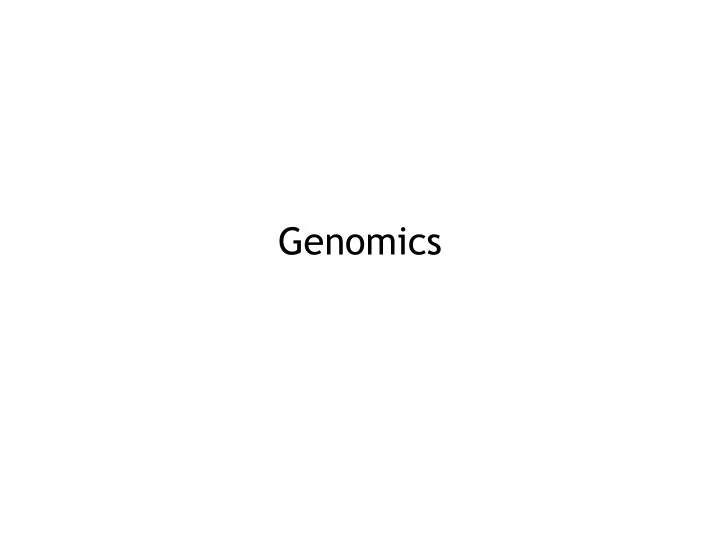

Genomics
Sequencing tech
Sequencing tech: next generation
What do we get from sequencing?
How to analyze these reads?
Mutation identification: Mapping Cancer Heart Disease Brain Disease
Genome projects: Assembly
Use sequencing for other types of data X-seq technology
RNA-seq
Assembly
Assembly Computational Challenge: assemble individual short fragments (reads) into a single genomic sequence (“superstring”)
Shortest common superstring Problem: Given a set of strings, find a shortest string that contains all of them Input: Strings s 1 , s 2 ,…., s n Output: A string s that contains all strings s 1 , s 2 , …., s n as substrings, such that the length of s is minimized
Shortest common superstring
Any ideas?
Directed Graph
Overlap Graph
Example
Shortest common superstring problem is hard
Shortest common superstring problem is hard
Is there a better or more feasible way?
Matching a superstring to a set of short reads Assume we have a set S of reads with length k (k-mers) Goal: Find a string that can be exactly split in to set S.
Overlap graph approach Assume we have a set S of reads with length k (k-mers) Goal: Find a string that can be exactly split in to set S.
Overlap graph approach is hard Assume we have a set S of reads with length k (k-mers) Goal: Find a string that can be exactly split in to set S.
There is an alternative way
De Bruijn Graph
De Bruijn Graph
What is the goal now?
Overlap graph vs De Bruijn graph CG GT TG CA AT GC Path visited every EDGE once GG
MultiEdge
MultiGraph
Some definitions
Eulerian walk/path zero or
Eulerian walk/path
Proof? Algorithm?
Assume all nodes are balanced a. Start with an arbitrary vertex v and form an arbitrary cycle with unused edges until a dead end is reached. Since the graph is Eulerian this dead end is necessarily the starting point, i.e., vertex v .
b. If cycle from (a) is not an Eulerian cycle, it must contain a vertex w , which has untraversed edges. Perform step (a) again, using vertex w as the starting point. Once again, we will end up in the starting vertex w.
c. Combine the cycles from (a) and (b) into a single cycle and iterate step (b).
Eulerian path • A vertex v is � semibalanced � if | in-degree( v ) - out-degree( v )| = 1 • If a graph has an Eulerian path starting from s and ending at t , then all its vertices are balanced with the possible exception of s and t • Add an edge between two semibalanced vertices: now all vertices should be balanced (assuming there was an Eulerian path to begin with). Find the Eulerian cycle, and remove the edge you had added. You now have the Eulerian path you wanted.
Recommend
More recommend